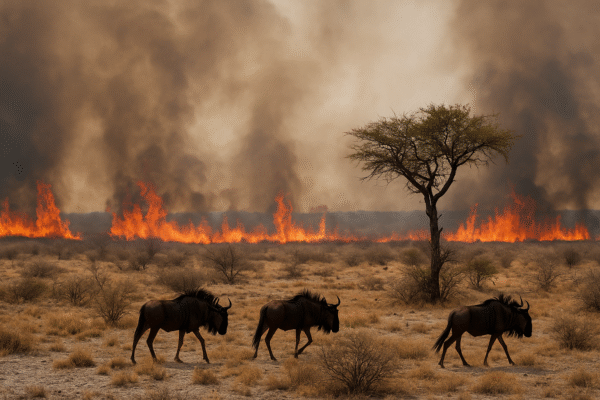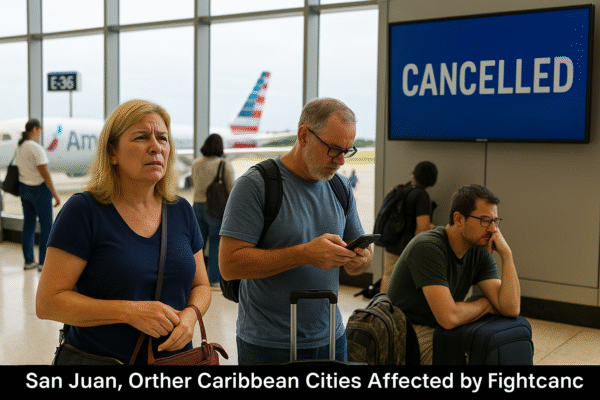Southeastern Beaver County, located in Oklahoma’s Panhandle, has been placed under a severe thunderstorm warning that is expected to affect both residents and travelers. The National Weather Service in Amarillo issued the alert on September 20, 2025, at 3:24 PM CDT, cautioning that the storm could last until at least 4:30 PM CDT.
The storm, moving eastward at 10 mph, has already been tracked around 7 miles east of Elmwood and 13 miles southeast of Beaver. Meteorologists confirm that the system is producing hazardous conditions, including 60 mph wind gusts and quarter-sized hail. Radar data highlights the potential for damage to vehicles, rooftops, siding, and trees. Rural areas may face the greatest impact due to limited infrastructure.
Tourist Destinations at Risk
While the storm’s path focuses on rural parts of Beaver County, several popular tourism destinations may experience disruptions:
- Beaver Dunes State Park: Known for its sand dunes, hiking trails, and off-roading, the park could see closures or limited access if conditions worsen.
- Black Kettle National Grassland: A peaceful area for wildlife viewing, now at risk of wind damage and storm-related hazards.
- Route 66 travel stops and museums: While not directly in the storm’s core, travel routes leading to attractions such as the National Route 66 Museum could face delays or detours.
Tourists currently in the area are urged to stay alert, as even minor infrastructure damage may lead to blocked roads and unexpected delays.
Safety Tips for Tourists
With severe thunderstorms, visitor safety is a priority. The National Weather Service recommends the following:
- Seek Shelter Immediately – Tourists should move to an interior room on the lowest floor of a sturdy building. Basements or storm cellars offer the safest refuge.
- Avoid Road Travel – Driving in hail or strong winds is dangerous. If caught on the road, pull over safely, remain inside the vehicle, and avoid parking under trees or overpasses.
- Protect Vehicles – Move cars to covered areas if possible. In the absence of shelter, use blankets or tarps to reduce hail damage.
- Stay Informed – Regularly monitor official weather updates through radio, local alerts, or mobile apps.
- Follow Local Authorities – Tourists should comply with evacuation orders or instructions from emergency services.
These precautions are vital, especially for travelers unfamiliar with Oklahoma’s rapidly changing weather conditions.
Impact on Local Tourism and Economy
Though Beaver County is less crowded than Oklahoma City or Tulsa, it relies on seasonal tourism. Attractions like state parks, campgrounds, and historical trails draw outdoor enthusiasts and road-trippers. A severe storm can result in reduced foot traffic, cancellations, and temporary closures of local businesses.
Hotels, restaurants, and shops serving tourists may experience a slowdown during the storm. This highlights how natural events can impact not only travel itineraries but also the local economy. Travelers are advised to remain flexible and prioritize safety over planned schedules.
Guidance for Travelers Post-Storm
Once the storm passes, tourists should take these steps before resuming activities:
- Check Road Conditions: Flash floods, fallen trees, and hail damage can make some rural roads impassable. Contact local authorities or highway services before traveling.
- Review Attraction Schedules: Parks, trails, or museums may delay reopening to assess storm damage. Calling ahead ensures you avoid unexpected closures.
- Plan for Delays: Allow extra time in itineraries, as transportation services could be disrupted.
- Carry Essentials: Food, water, and emergency kits should be on hand in case of extended road closures.
By preparing in advance, tourists can resume their trips safely once conditions improve.
Oklahoma Travel Advisory: Why Awareness Matters
Severe thunderstorms are common in Oklahoma, particularly in the Panhandle region. While these storms often pass quickly, they can leave behind dangerous debris, power outages, or damaged infrastructure. Travelers visiting during late summer and early fall should always check weather forecasts before embarking on day trips or outdoor activities.
Beaver County’s natural beauty remains a draw for outdoor recreation, but safety should always come first. The area’s wide-open landscapes can make weather changes appear suddenly, giving visitors less time to react than in urban centers.
Final Thoughts
The severe thunderstorm warning in Southeastern Beaver County is a timely reminder that nature often sets the agenda for travel plans. For those exploring Oklahoma’s state parks, grasslands, and iconic highways, awareness and preparation are the best defenses against hazardous weather.
Tourists are encouraged to stay indoors until the storm clears, monitor updates, and prioritize their safety over schedules. With careful planning, they can still enjoy the beauty of Oklahoma’s Panhandle once the skies settle.
For more travel news like this, keep reading Global Travel Wire


















